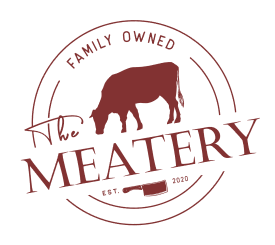Australian Wagyu has earned its reputation as one of the most delectable beef varieties in the world. The meat offers an exceptional flavor profile that combines rich, buttery notes with a distinctive umami character. The remarkable taste stems from its intense marbling – the intricate networks of intramuscular fat that create the signature melt-in-your-mouth texture.
What makes Australian Wagyu particularly special is its balanced flavor profile. Unlike some other Wagyu varieties that can be overwhelmingly rich, Australian Wagyu presents a harmonious blend of beefy depth and buttery sweetness. The meat exhibits a clean, natural taste that reflects Australia's pristine farming environment and strict quality controls.
The taste experience of Australian Wagyu can be characterized by:
- Initial bite: A subtle sweetness that comes from the marbling
- As you chew: Rich, complex beef flavors with buttery undertones
- Finish: A lingering umami sensation that leaves you craving more
The eating quality is consistently high across different cuts, though each offers its unique characteristics. Premium cuts like ribeye and striploin showcase the marbling at its finest, while secondary cuts provide excellent flavor at a more accessible price point. The meat's tenderness is remarkable, requiring minimal chewing effort while releasing waves of flavor with each bite.
Is Australian Wagyu a Good Alternative To Japanese Wagyu?
Australian Wagyu has established itself as a premium alternative to Japanese Wagyu, offering exceptional quality at a more accessible price point. While Japanese Wagyu remains the gold standard, Australian Wagyu provides a compelling value proposition that has gained recognition worldwide.
Several factors contribute to Australian Wagyu's premium positioning:
- Genetic Heritage: Direct bloodlines from Japanese Wagyu cattle
- Quality Assurance: Strict grading systems and traceability
- Scale of Production: Larger operations allowing for better availability
- Cost Efficiency: Advanced farming practices reducing production costs
The Australian Wagyu industry has successfully created a distinct identity while maintaining the core qualities that make Wagyu special. This positioning has resonated with both consumers and chefs who appreciate the balance of quality and value. The industry's transparency and commitment to sustainable practices have further strengthened its premium status in the global market.
Australian Wagyu Origins
The story of Australian Wagyu begins in the 1980s when the first Japanese Wagyu cattle were imported to Australia. These initial imports included both Black (Tajima) and Red (Akaushi) Wagyu genetics, laying the foundation for what would become a thriving industry.
Key milestones in Australian Wagyu development:
- 1980s: First Wagyu genetics imported from Japan
- 1990s: Establishment of breeding programs and industry standards
- 2000s: Development of unique Australian Wagyu bloodlines
- Present: Recognition as a global leader in Wagyu production
Australian producers have carefully maintained the genetic integrity of their Wagyu herds while adapting breeding programs to suit local conditions. The vast Australian landscape and clean environment have proven ideal for Wagyu production, allowing cattle to thrive while maintaining their prestigious genetic characteristics.
More Insight On Australian Wagyu
Understanding Australian Wagyu involves learning about its unique grading system, production methods, and quality indicators. The Australian Wagyu Association (AWA) has developed comprehensive standards that help consumers make informed choices.
Essential aspects of Australian Wagyu education include:
- Marble Score System: Ranges from 1-9+, indicating intramuscular fat content
- Breed Verification: Understanding F1-F4 crossbreeding terminology
- Quality Indicators: Color, texture, and fat distribution
- Production Standards: Feeding protocols and animal welfare practices
The industry maintains strict traceability systems, allowing consumers to verify the authenticity and origin of their Australian Wagyu. This transparency has become a cornerstone of consumer education and trust in the product.
Comparison With Japanese And American Wagyu
When comparing Australian Wagyu with its Japanese and American counterparts, several distinct characteristics emerge. Each variety offers unique qualities that cater to different preferences and applications.
Key differences include:
| Characteristic | Australian Wagyu | Japanese Wagyu | American Wagyu |
|---|---|---|---|
| Marbling Level | High (BMS 6-9+) | Very High (BMS 8-12) | Moderate to High (BMS 4-8) |
| Flavor Profile | Balanced | Intense | Beefy |
Australian Wagyu strikes an excellent balance between the intense marbling of Japanese Wagyu and the robust beef flavor associated with American varieties.
Cooking And Preparation Tips
Preparing Australian Wagyu requires attention to detail to maximize its exceptional qualities. The high marbling content demands specific cooking techniques to achieve optimal results.
Essential cooking guidelines:
- Temperature: Always bring meat to room temperature before cooking
- Seasoning: Simple seasoning with salt and pepper is often sufficient
- Cooking Method: Prefer grilling, pan-searing, or reverse searing
- Temperature Control: Cook to medium-rare (130-135°F) for best results
Remember to rest the meat properly after cooking, allowing the juices to redistribute. This crucial step ensures the optimal eating experience that Australian Wagyu is famous for.
As one of the premier retail options in 2025 for Wagyu, The Meatery goes above and beyond to ensure you only receive the highest quality Wagyu at your doorstep! Check out our selection of Japanese, American, and Australian Wagyu!









